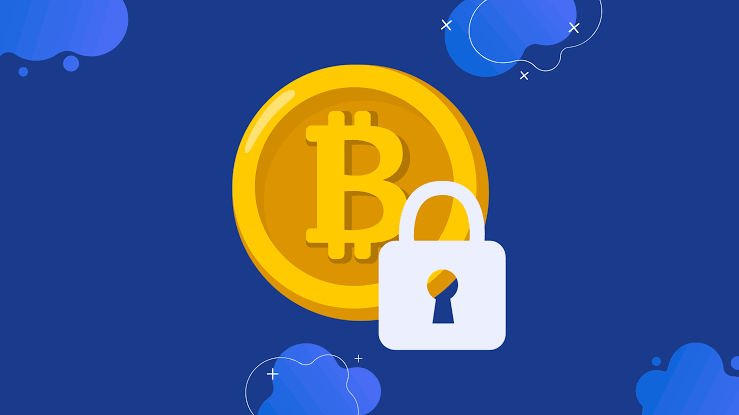With the emergence of cryptocurrencies over the past ten years, the financial industry has experienced a paradigm change unlike any other. With the launch of Bitcoin in 2009, what was once a mysterious idea has evolved into a fully-fledged financial ecosystem with thousands of digital currencies and a market cap totaling billions of dollars. Millions of investors, both experienced and inexperienced, have been attracted in by the appeal of decentralised finance, the promise of big profits, and the ground-breaking blockchain technology it is powered by.
However, this rapid ascent has not been without its negative aspects. Cryptocurrency investments gained popularity and value as a result, and they also attracted cybercriminals as a result.
Hacks, swindles, and fraud thrive in the crypto market because it is decentralised and frequently unregulated. The cryptocurrency industry has experienced its fair share of security issues, from high-profile exchange hacks in which millions of dollars’ worth of digital assets disappeared over night to sophisticated phishing attacks on individual investors. In fact, it’s estimated that since Bitcoin’s birth, billions of dollars’ worth of cryptocurrencies have been stolen.
The necessity of security in the cryptocurrency field is highlighted by the contrast between enormous possibility and substantial risk.
In this article, we’ll discuss about Cryptocurrency and rising hacks, different Cryptocurrency weaknesses and best practices for cryptocurrency security
Cryptocurrencies And Rising Hacks
According to the security audit firm CertiK, this month’s cyber vulnerabilities and hacker incursions cost cryptocurrency dealers an astounding $303 million in digital assets. According to this startling statistic, July may end up being the year’s most disastrous month in terms of monetary losses due to cybercrime. This update comes shortly after a critical incident that affected supporters of decentralised finance (DeFi), particularly after the decentralised exchange Curve Finance’s recent security breach, which was a key part of the DeFi network.
A large asset outflow of roughly $125 million was revealed earlier in July by the blockchain bridging protocol Multichain. After this occurrence, the platform stopped operating and disclosed that its CEO, Zhaojun, had been detained by Chinese authorities back in May.
According to data from CertiK, of the total $303 million in losses this month, a sizeable portion—roughly $285 million—was attributable to hacks and cyberattacks, with the Multichain and Curve breaches serving as prominent instances.
The improper use of flash loans resulted in a separate loss of almost $8.7 million. Bypassing conventional middlemen, these cutting-edge financial processes enable dealers to borrow money without providing any security. Flash loans are legal, but malevolent parties might use them to their advantage by artificially inflating the prices of smaller, less popular tokens. Conic Finance, a DeFi platform, is an example where a flash loan exploit caused the loss of 1,700 ether (ETH), valued at $3.26 million, during the event.
Therefore, it is crucial for investors to safeguard their investments from fraudsters as the cybercriminals vanish into the great expanse of online obscurity and abscond with digital goods that are essentially untraceable and irretrievable.
Understanding The Risks
Risks to your bitcoin investments might take many different shapes. While others may result from human error, some may be caused by technical errors.
Typical Cryptocurrency Weaknesses
1.Hacking: Cryptocurrency exchanges and wallets are vulnerable to hacking, much like many other digital systems. Such violations may result in the loss of assets or unauthorised fund withdrawals.
2.Scams: There are several misleading tactics used in the cryptosphere. These range from fake ICOs and crypto airdrops to traditional Ponzi schemes.
3.Phishing: These are fraudulent methods designed to get personal information that can then be exploited to gain unauthorised access to funds.
4. Social engineering is the practise of tricking others into disclosing private information. These strategies are common in the crypto realm as well as the traditional internet world, and they can result in fund misappropriation.
5. Forks: Blockchain forks may cause unpredictability. Investors could become perplexed about the legitimate fork and risk losing money by supporting the wrong version.
Best Practices for Cryptocurrency Security
1.Activate two-factor authentication (2FA) to strengthen the security system protecting your account. An additional degree of security against unauthorised access is provided by this dual verification method, which calls for both a password and a special code.
2.Strengthened Password Management: Create unique, secure passwords for each of your accounts. Avoid using predictable passwords or reusing them on several platforms. If the same credentials are used, a single password leak might put several accounts in danger.
3 Frequently Updated Software: Make sure to regularly update your browsers, operating system, and any cryptocurrency-related applications. By doing this, you may be certain that you have the most recent security upgrades.
4.Exercise cautious while responding to requests for information that aren’t requested. Avoid clicking links from sites you can’t verify and verify identities before disclosing important information.
5.Increase Investment Diversification: Do not invest in just one cryptocurrency or exchange; diversify your holdings. As a result of this strategy’s risk dilution, potential breaches won’t wipe out your entire wealth.
6.Employ secure networks: Refrain from using public WiFi to access your cryptocurrency accounts. Consider using a reliable VPN to encrypt your data if necessary to ensure a secure connection.
Conclusively,the need for the crypto community to be watchful and adaptable is highlighted by the potential for emerging technologies, like quantum computing, to undermine current cryptographic systems.
On the regulatory front, a number of governments are proactively ensuring investor safety. The governments of Hong Kong and South Korea, as well as organisations like the SEC in the United States, are notably working on legislation to protect investors. These legislative initiatives show that the importance of cryptocurrencies and the demand for a well-organized, safe framework are recognised on a worldwide scale.
Additionally, new investment channels are opening up, bringing with them particular risks, as a result of the rising popularity of decentralised finance (DeFi) platforms and non-fungible tokens (NFTs). It is impossible to exaggerate the value of ongoing education, intercommunal cooperation, and creative thinking as the globe progresses farther into this digital era.

